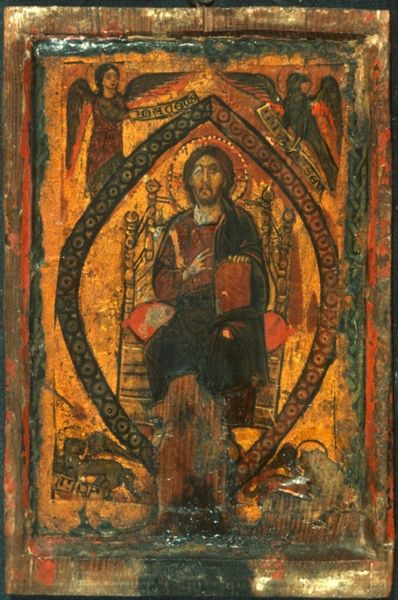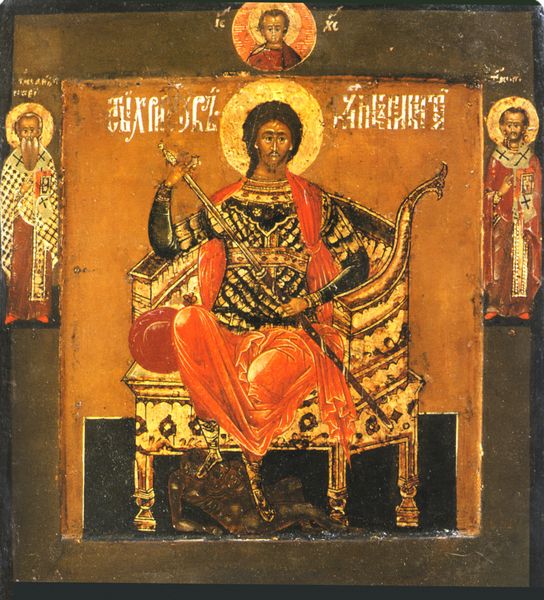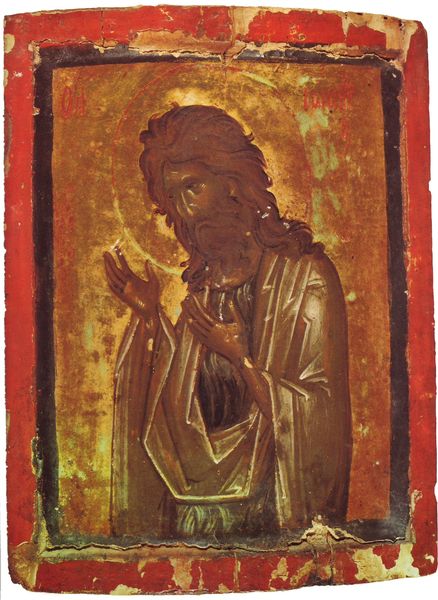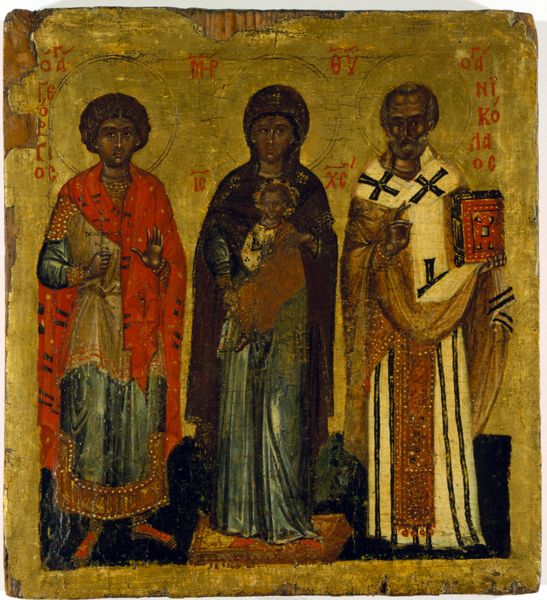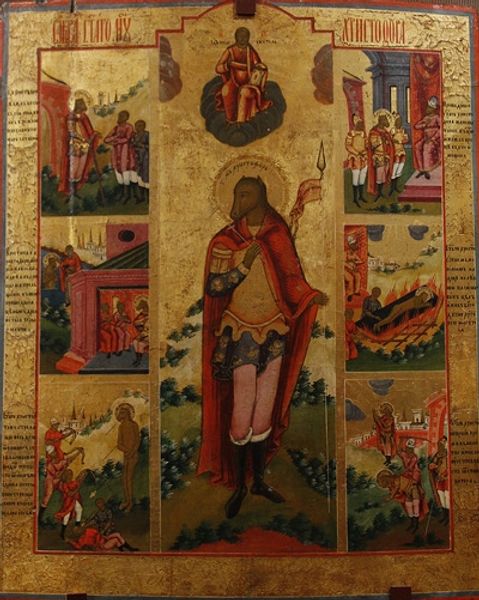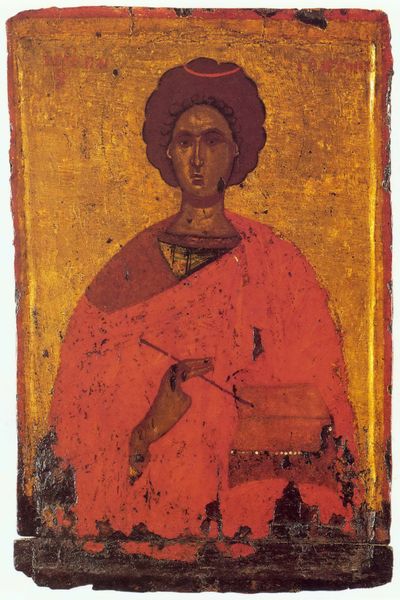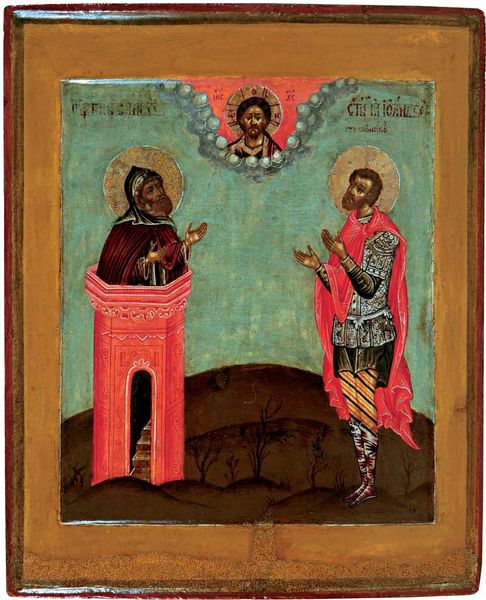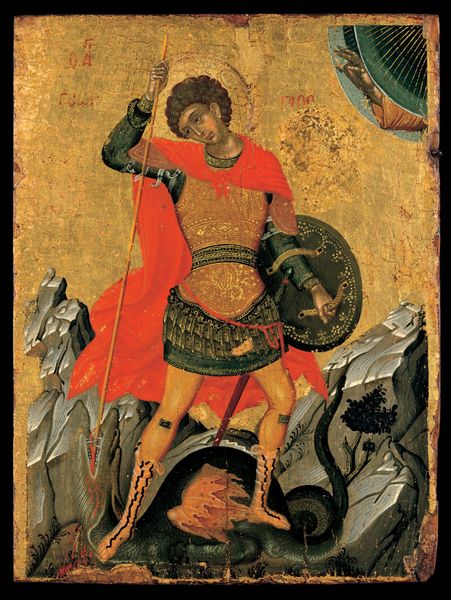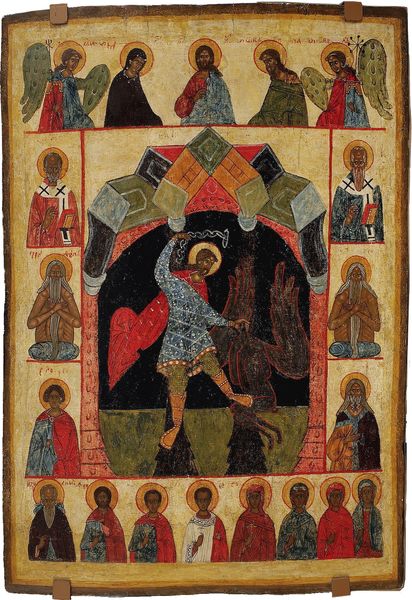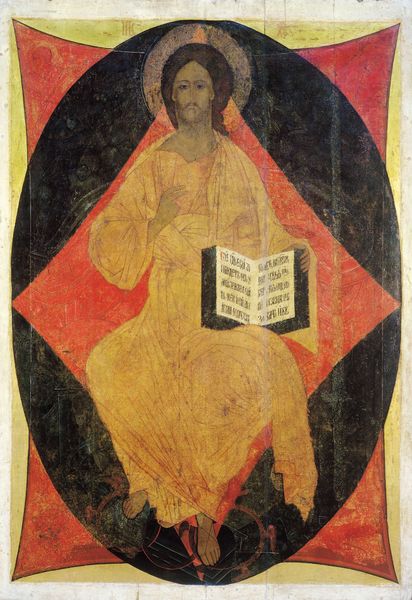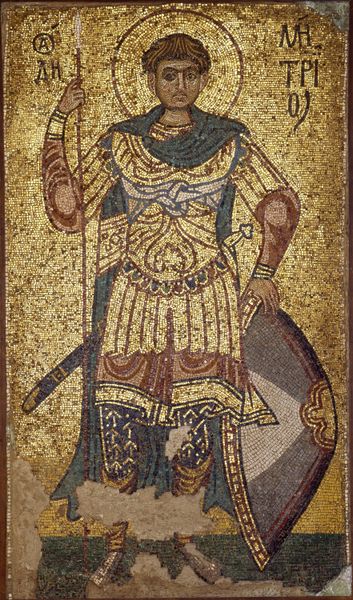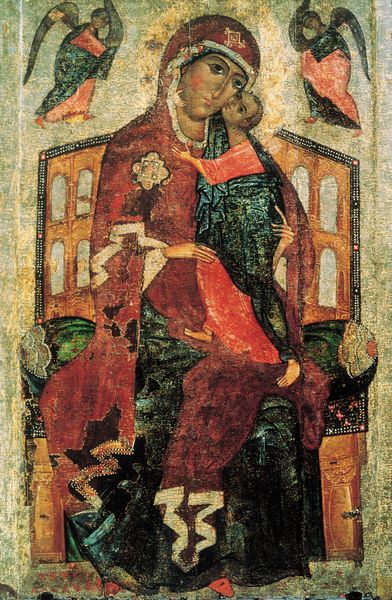
tempera, painting
#
byzantine-art
#
tempera
#
painting
#
figuration
#
jesus-christ
#
christianity
#
christ
Copyright: Public domain
Editor: This is "Pantokrator" by Nicholas Roerich, painted in 1909 with tempera. It's currently housed in the Tretyakov Gallery in Moscow. I am struck by the flatness of the figures and the intense, almost unsettling gaze of Christ. What do you make of the visual choices here? Curator: Formally, the composition immediately presents us with a clear hierarchy, centered on the figure of Christ. Roerich's use of tempera, coupled with the stylized depiction, flattens the pictorial space, moving away from illusionism and towards symbolic representation. Note how the gold halo flattens even more the sense of three dimensionality. The palette is intentionally limited, contributing to the overall impact. Are you sensitive to how Roerich merges Byzantine form and more modern compositional devices? Editor: I do see how he borrows from Byzantine art. Is he consciously trying to create a sense of otherworldliness by avoiding naturalistic color and depth? Curator: Precisely. Look closely at the drapery; how the folds are indicated with simplified, almost geometric lines, devoid of subtle shading. This simplification reinforces the iconic, rather than representational, quality of the work. Consider the balance – how do the two flanking figures relate formally to the dominant central Christ? Editor: They mirror each other but the scrolls give a dynamic angular movement compared to Christ's stillness. Curator: A telling observation! The angularity introduces visual tension. And note the color echoes in the clothing patterns – this introduces rhythm to the work. How does that shift the iconic weight? Editor: It feels more vibrant and animated, not frozen in time but more about a story. I’m realizing the choices in color and shape work together to build meaning. Curator: Exactly, Roerich orchestrates these elements to guide our understanding.
Comments
No comments
Be the first to comment and join the conversation on the ultimate creative platform.
